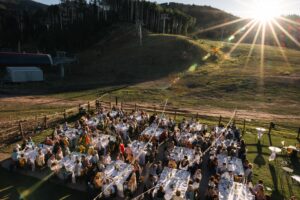You’ve probably been told countless times that you must monitor your plastic consumption, recycle, and compost. It would be a lot more beneficial for America if people knew the reason why.
What happens to your trash and recycling after it gets picked up? Many Americans don’t know the answer. For people living along the Wasatch Back, when your recycling is picked up it is taken to a transfer station in which it will be sorted and recyclables such as plastic, cardboard, paper, and aluminum, are sent to processing plants and recycled. When your garbage is picked up, it is brought to a landfill where it is dumped into a cell, and hard soil is placed on top of it as a cap. Other safeguards such as liners and detention pools prevent harmful substances from polluting the soil and creating harmful run-off.
Waste has very negative effects on the environment. Per year, an estimated 14 million tons of plastic end up in the oceans one way or another. Massive landfills emit carbon dioxide and methane through the breaking down of waste. Overall, waste production and removal are a problematic situation worldwide. Individuals can help by recycling and composting, but the best thing to do is always monitor what and how much you are throwing away.
By Grayson Rae, Sophomore at Park City High School
